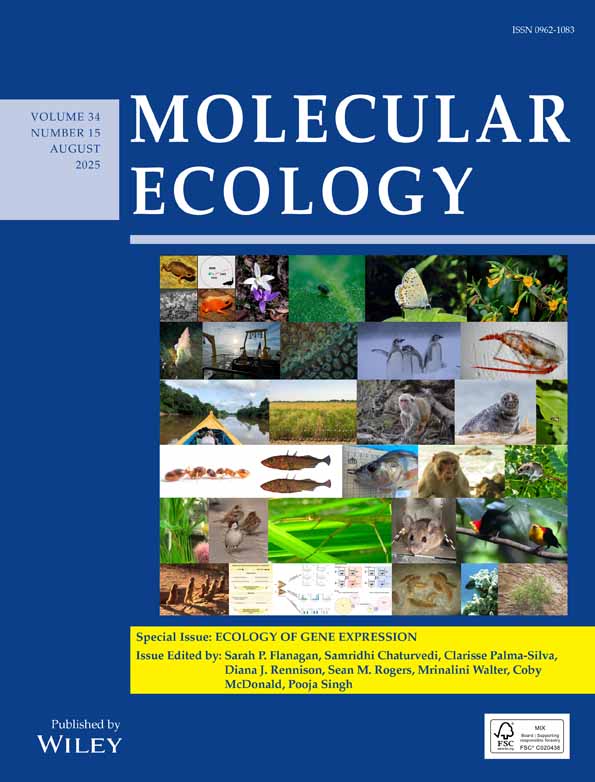Chloroplast DNA phylogeography of the argan tree of Morocco
Abstract
Polymorphisms in the chloroplast genome of the argan tree (Sapotaceae), an endemic species of south-western Morocco, have been detected by restriction site studies of PCR-amplified fragments. A total of 12 chloroplast DNA (cpDNA) and two mitochondrial DNA (mtDNA) fragments were amplified and digested with a single restriction enzyme (HinfI). Polymorphisms were identified in six of the cpDNA fragments, whereas no mtDNA polymorphisms were detected in a survey of 95 individuals from 19 populations encompassing most of the natural range of the species. The cpDNA polymorphisms allowed the identification of 11 haplotypes. Two lineages, one in the south-east and the other in the north-west, divide the range of the argan tree into two distinct areas. The level of genetic differentiation measured at the haplotype level (GSTc= 0.60) (i.e. with unordered haplotypes) was smaller than when phylogenetic relationships were taken into account (NSTc= 0.71–0.74) (ordered haplotypes), indicating that population history must be considered in the study of the geographical distribution of cpDNA lineages in this species. If contrasted with the level of nuclear genetic differentiation measured in a previous study with isozymes (GSTn= 0.25), the results indicate a relatively high level of gene flow by seeds, or conversely a relatively low level of gene flow by pollen, as compared with other tree species. Goats and camels could have played an important role in disseminating the fruits of this tree.




